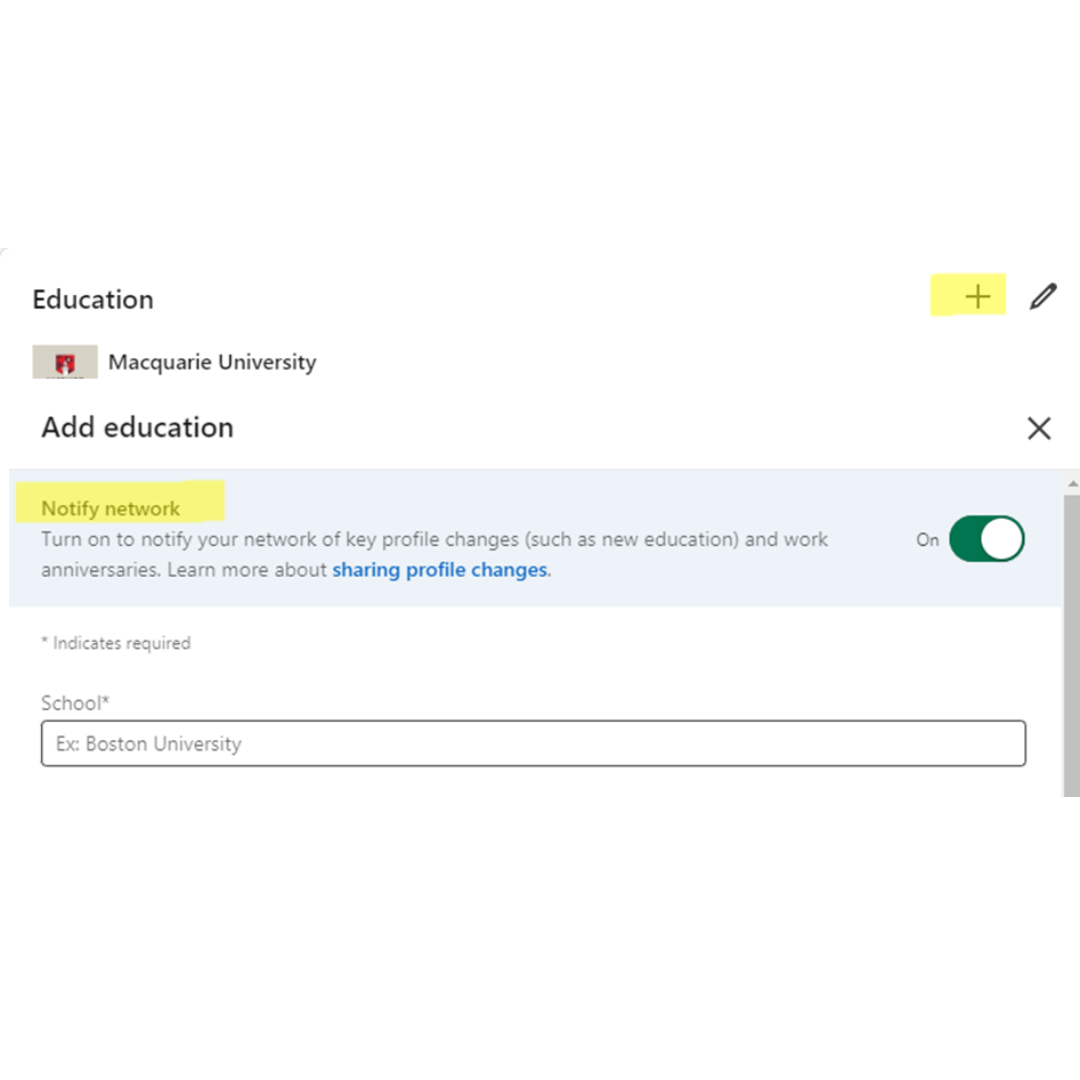Setting Up a LinkedIn Profile
Creating a strong LinkedIn profile is essential for job seekers in Australia to stand out to potential employers and recruiters. Here's a detailed guide on how to set up a robust LinkedIn profile tailored for job search in Australia:
Profile Photo
Choose a professional headshot as your profile photo:
as Linkedin is primarily used for professional connections and opportunities, your photo should reflect this. Avoid using recreational or inappropriate looking images, group photos or casual selfies. You want to avoid people judging you based on an image!
Dress in appropriate attire and ensure good lighting:
as mentioned above, you want to present professionally, so a clear image, ensuring you are suitably dressed to reflect this.
Use a clear, high-resolution image with a neutral background:
you want the image to focus clearly on you and not you blended into the background.

Headline
Write a compelling headline that highlights your expertise and career aspirations: this captures the attention of the reader and potentially encourages them to take more interest in your profile.
Include relevant keywords related to your industry and job role:
this increases the chances of your profile appearing in search results when recruiters or potential employers are looking for candidates with specific skills or experience.
Use action words to convey your value proposition to potential employers: action words grab the reader's attention, making your headline more engaging and memorable. They convey a sense of energy and enthusiasm, which can make you stand out among other profiles.
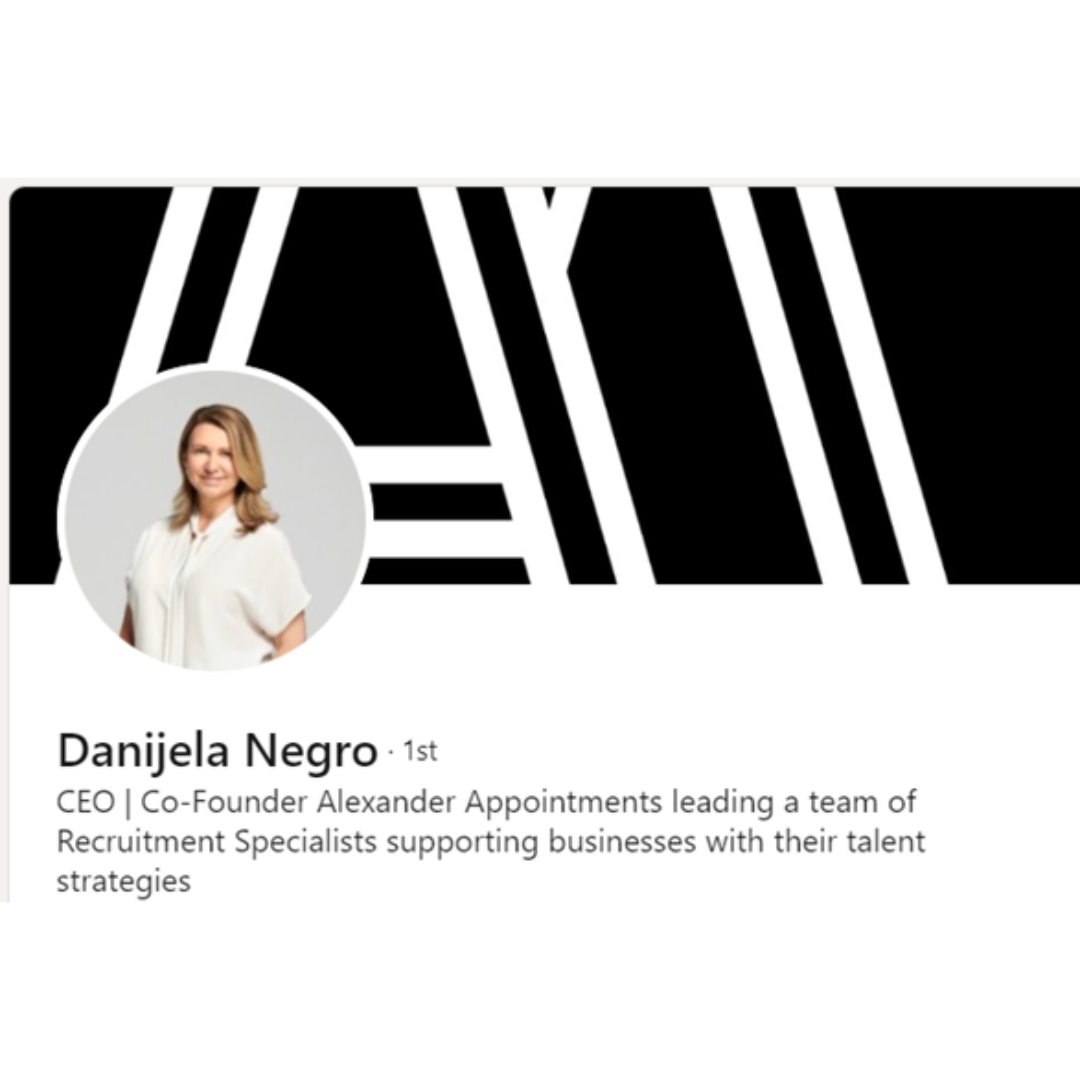
Summary
Craft a concise and engaging summary that showcases your unique skills, experiences, and career goals:
Your summary serves as your elevator pitch, highlighting your unique skills, experiences, and career aspirations in a compelling way.
Highlight your key achievements, strengths, and areas of expertise:
This not only highlights your track record of success but also provides insights into how you can contribute effectively to future roles.
Personalise your summary to reflect your personality and professional brand:
this helps you stand out from other candidates and allows you to showcase your authentic self, building stronger connections and greater opportunities for career success.
Include relevant industry keywords to improve searchability:
This ensures your profile appears in relevant searches, which maximises your visibility and expands your network of professional opportunities within your field.
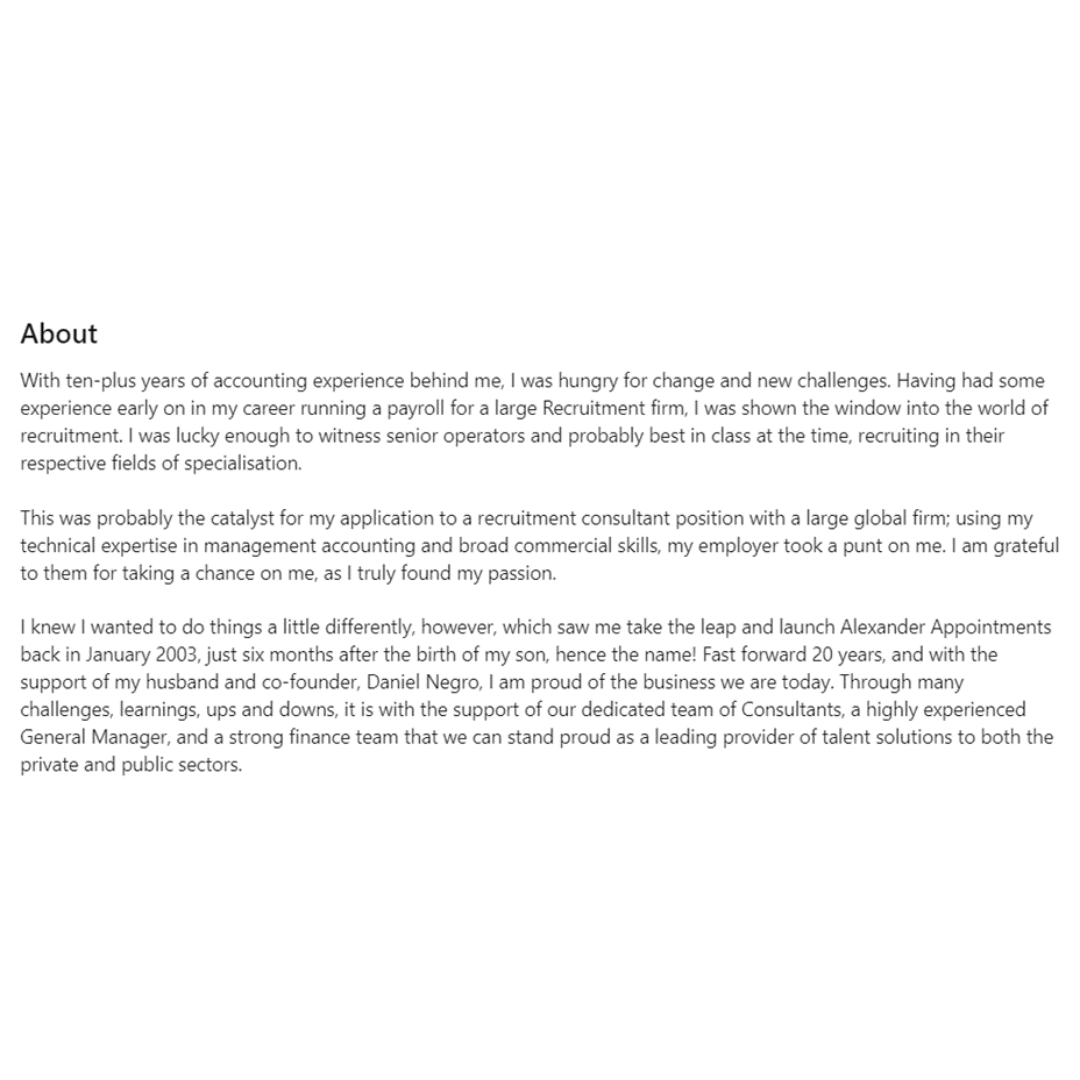
Work Experience
List your work experience in reverse chronological order, starting with your most recent role:
This approach allows recruiters and hiring managers to quickly understand your most recent accomplishments and career trajectory, providing a clear snapshot of your professional journey and current expertise.
Provide detailed descriptions of your responsibilities, accomplishments, and contributions in each position:
By offering specific examples of your achievements and detailing your key responsibilities, you demonstrate your ability to make significant contributions and deliver results in a variety of professional settings.
Use bullet points to make your achievements stand out and quantify your results where possible:
Bullet points help recruiters and hiring managers easily identify key achievements, while quantifying your results adds credibility and demonstrates the measurable impact of your actions.
Tailor your descriptions to highlight skills and experiences relevant to the job you're targeting:
This targeted approach increases your chances of capturing the attention of potential employers and securing interviews for roles that align with your career goals.
For example, if the below candidate was applying for an education role, this is how they would describe their experience:
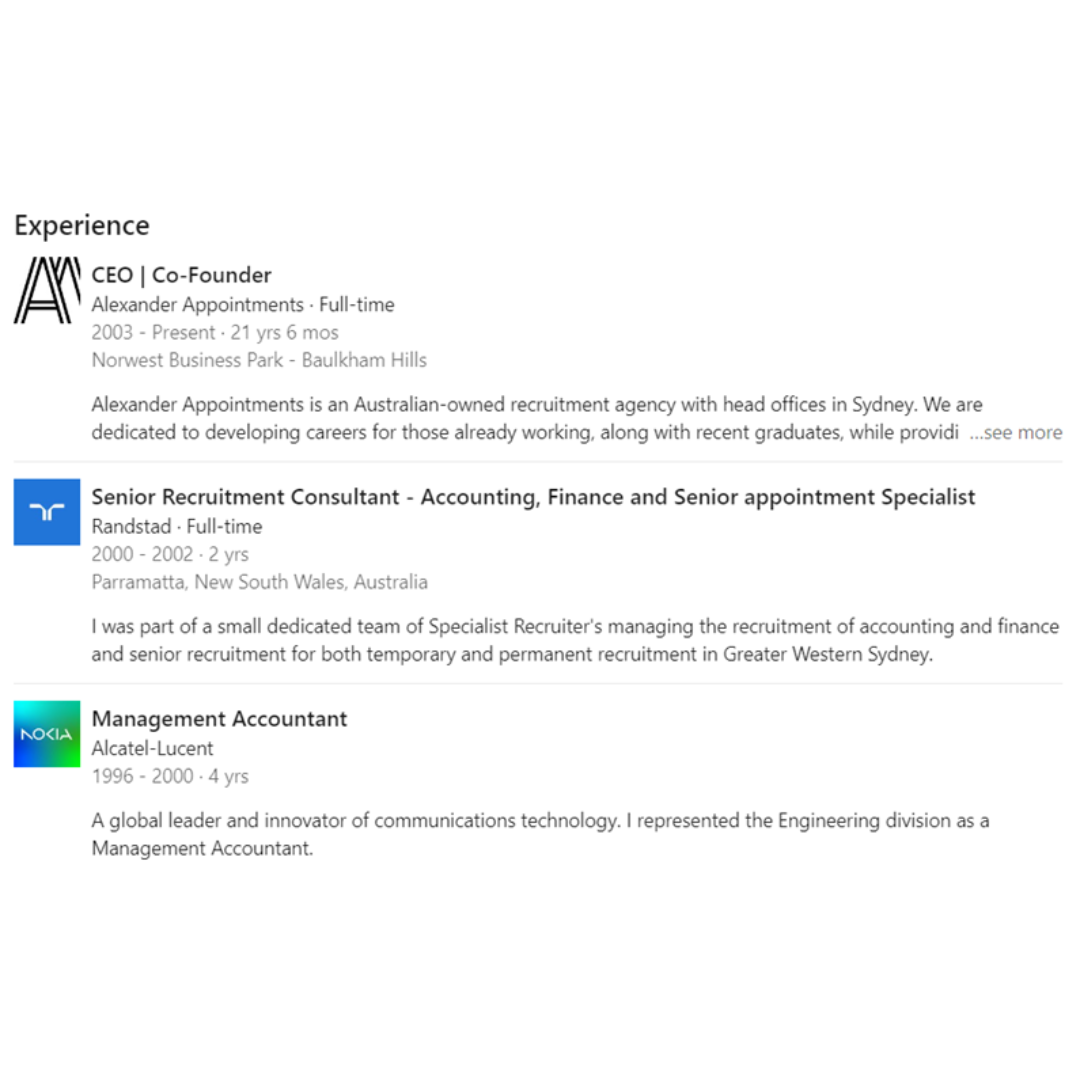
Education
Include information about your educational background, including degrees, certifications, and relevant coursework:
It demonstrates your qualifications and expertise in specific areas, enhancing your credibility as a candidate and highlighting your commitment to continuous learning and professional development.
Mention any academic achievements, honours, or awards:
mentioning any academic achievements, honours, or awards showcases your dedication to excellence and distinguishes you from other candidates.
List your educational institutions with their full names and locations:
it helps establish a professional context for your educational background, which strengthens your overall profile.
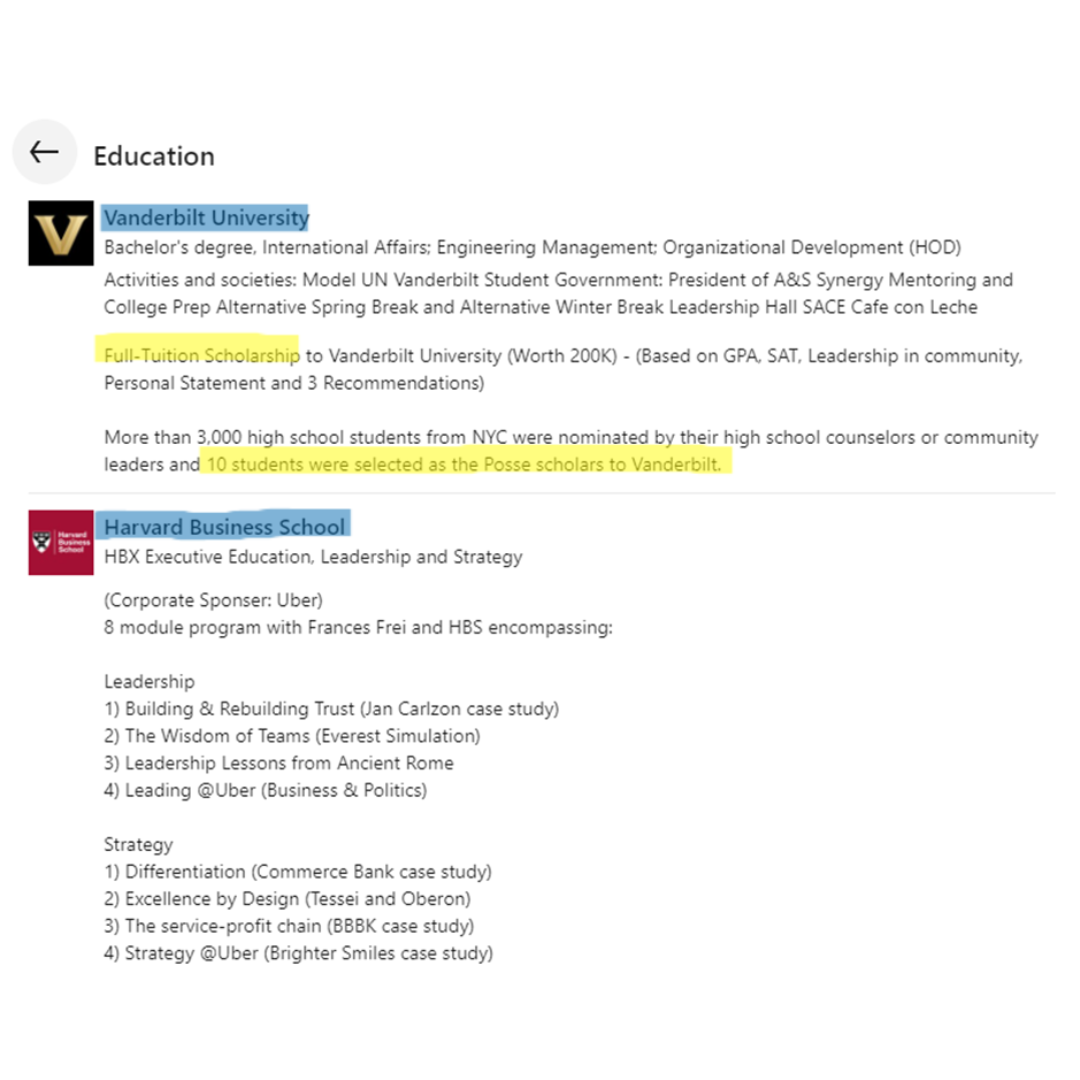
Skills
Showcase your skills and competencies relevant to your industry and job role:
by highlighting your expertise in key areas, you provide recruiters and hiring managers with valuable insights into your ability to excel in the role and contribute to the organisation's success.
Include both hard skills (e.g., technical skills, software proficiency) and soft skills (e.g., communication, leadership):
while hard skills demonstrate your proficiency in specific tasks or tools, soft skills showcase your interpersonal abilities and emotional intelligence, which are equally important for success in most roles.
Arrange your skills in order of importance and endorse others' skills to receive endorsements in return:
Arranging your skills in order of importance allows you to prioritise the capabilities most relevant to your target job or industry. By strategically organising your skills, you ensure that recruiters and hiring managers immediately see your strongest competencies.
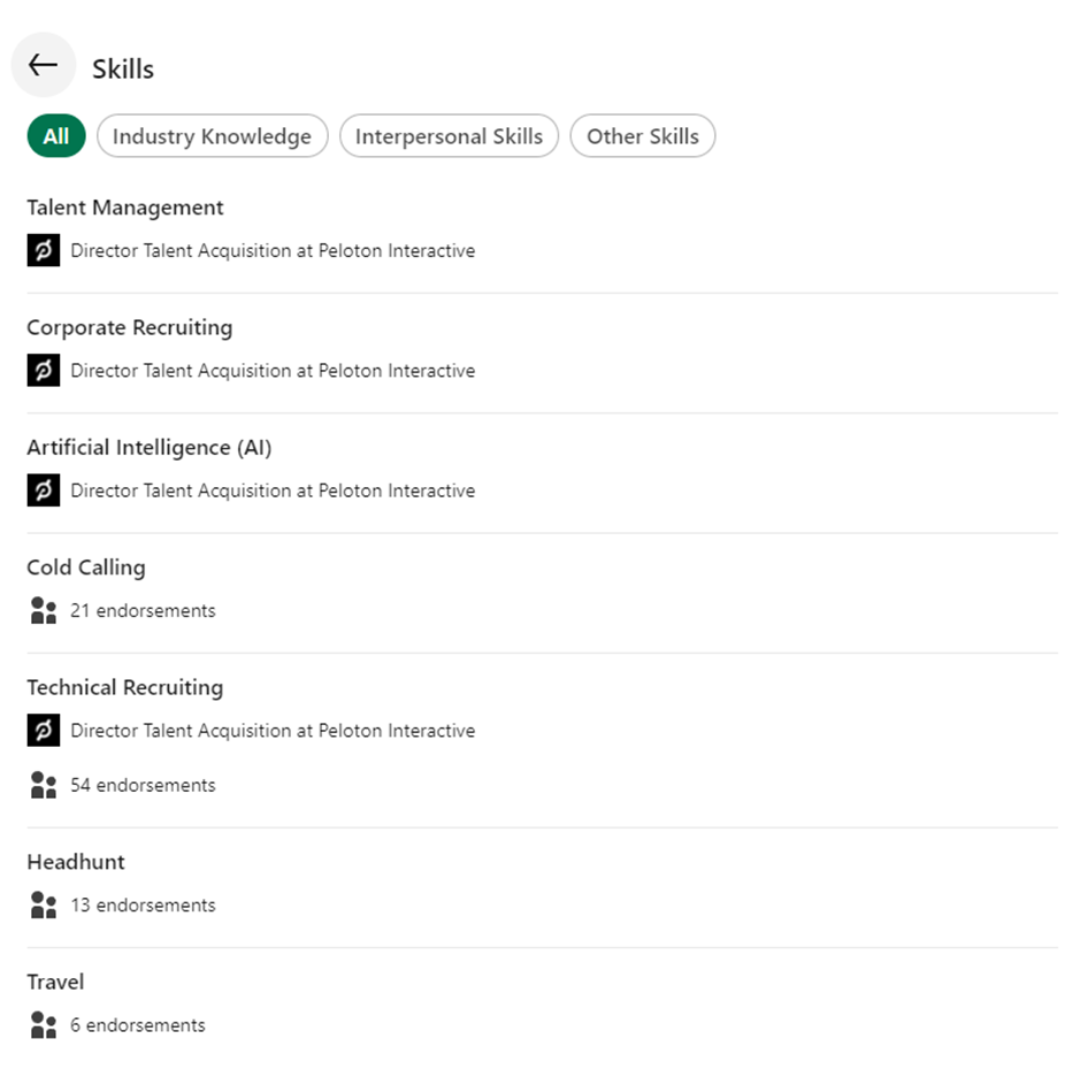
Recommendations
Request recommendations from colleagues, supervisors, or clients who can vouch for your skills and abilities:
recommendations provide third-party validation of your expertise and character, offering valuable insights for potential employers and strengthening your profile for job opportunities.
Write personalised messages when requesting recommendations and provide specific examples of your work together:
writing personalised messages when requesting recommendations and providing specific examples of your work together demonstrates your professionalism and genuine appreciation for their endorsement.
Display recommendations that highlight different aspects of your professional strengths:
displaying recommendations that highlight different aspects of your professional strengths offers a well-rounded view of your capabilities and accomplishments.
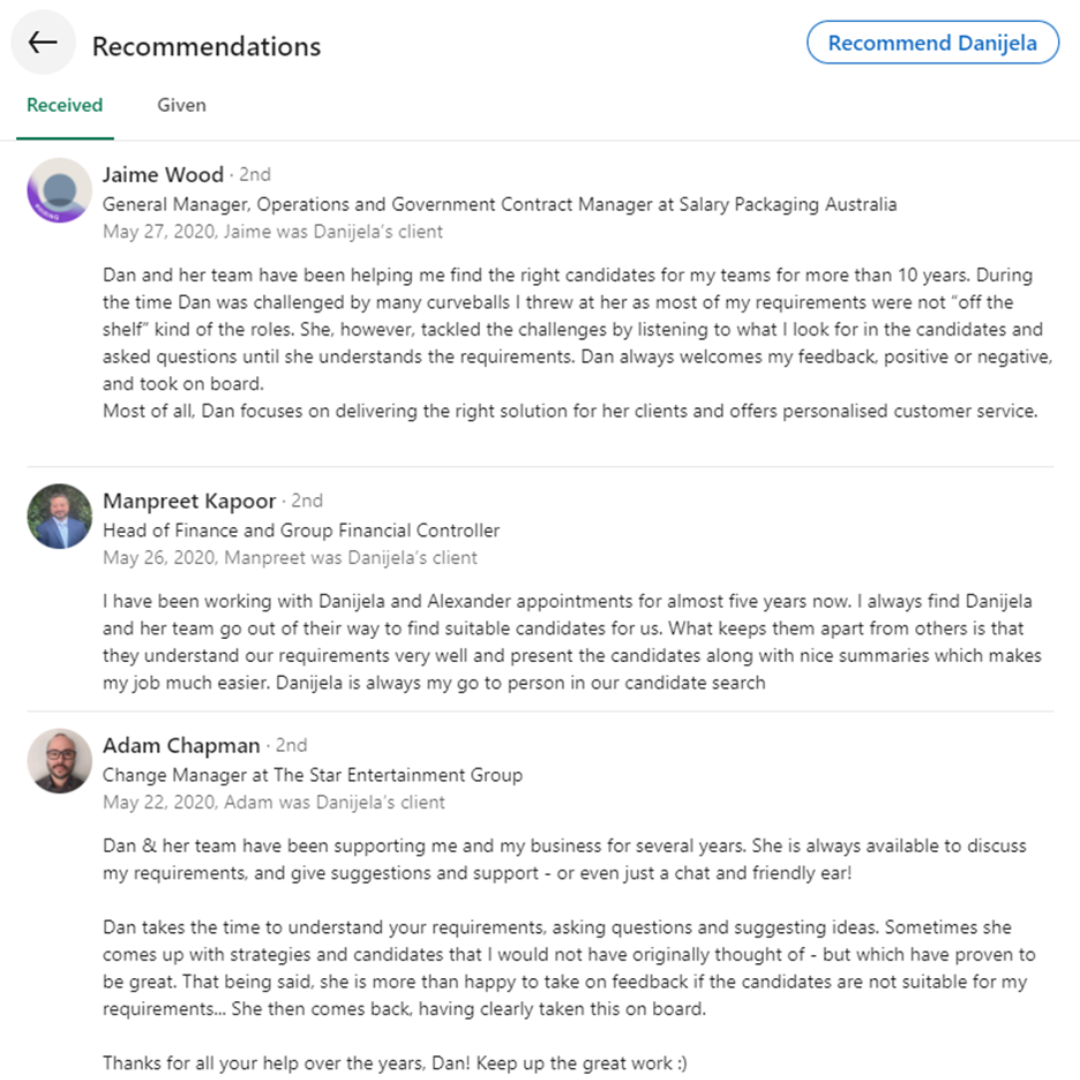
Accomplishments
Highlight any professional achievements, awards, or certifications you've earned:
mentioning any awards or certificates you've earned reinforces your accomplishments and dedication to professional development, which enhances your profile's appeal to potential employers.
Include relevant projects, publications, languages spoken, patents, or volunteer experiences:
Highlighting these areas gives depth to your profile, showcasing your expertise and versatility. For example, mentioning a project where you streamlined processes or a publication where you shared industry insights can set you apart.
Provide additional context or descriptions for each accomplishment to showcase their significance:
describing the impact of a particular project or publication can demonstrate your problem-solving skills and industry knowledge, highlighting a deeper understanding of your skills.
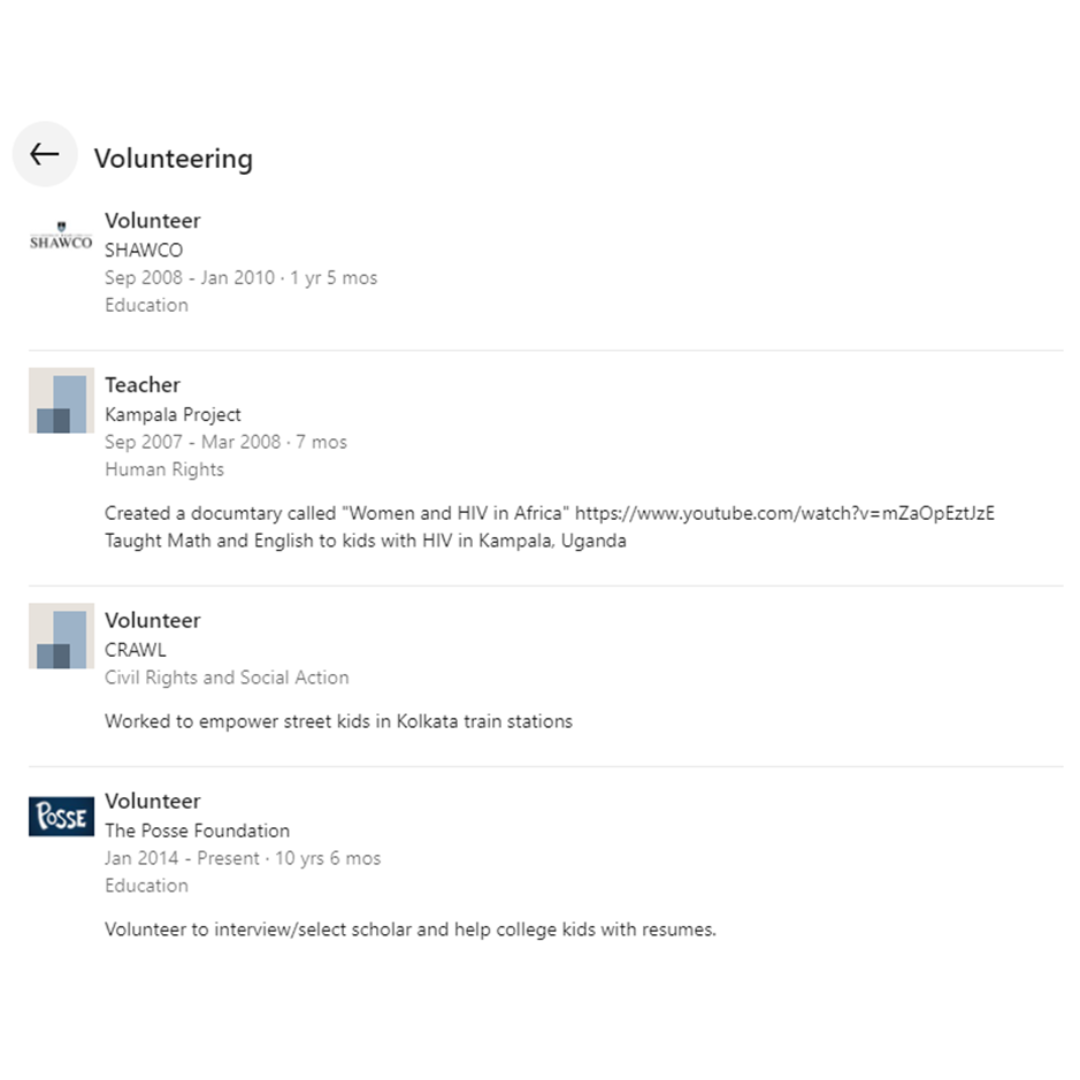
Interests
Follow companies, influencers, and organisations relevant to your industry and interests:
This keeps you informed about industry trends and encourages networking opportunities. By staying updated on company news and following thought leaders, you demonstrate a proactive approach to staying informed and connected.
Join LinkedIn groups related to your field to stay updated on industry news and trends:
Being part of industry-specific groups enables you to engage with like-minded professionals, share knowledge, and stay abreast of the latest developments. Active participation in discussions can enhance your visibility and credibility within your field.
Engage with content shared by others in your network by liking, commenting, and sharing posts:
This shows your active involvement in the professional community and helps to build relationships. Thoughtful comments or shares on relevant content can position you as a knowledgeable and engaged member of your network.
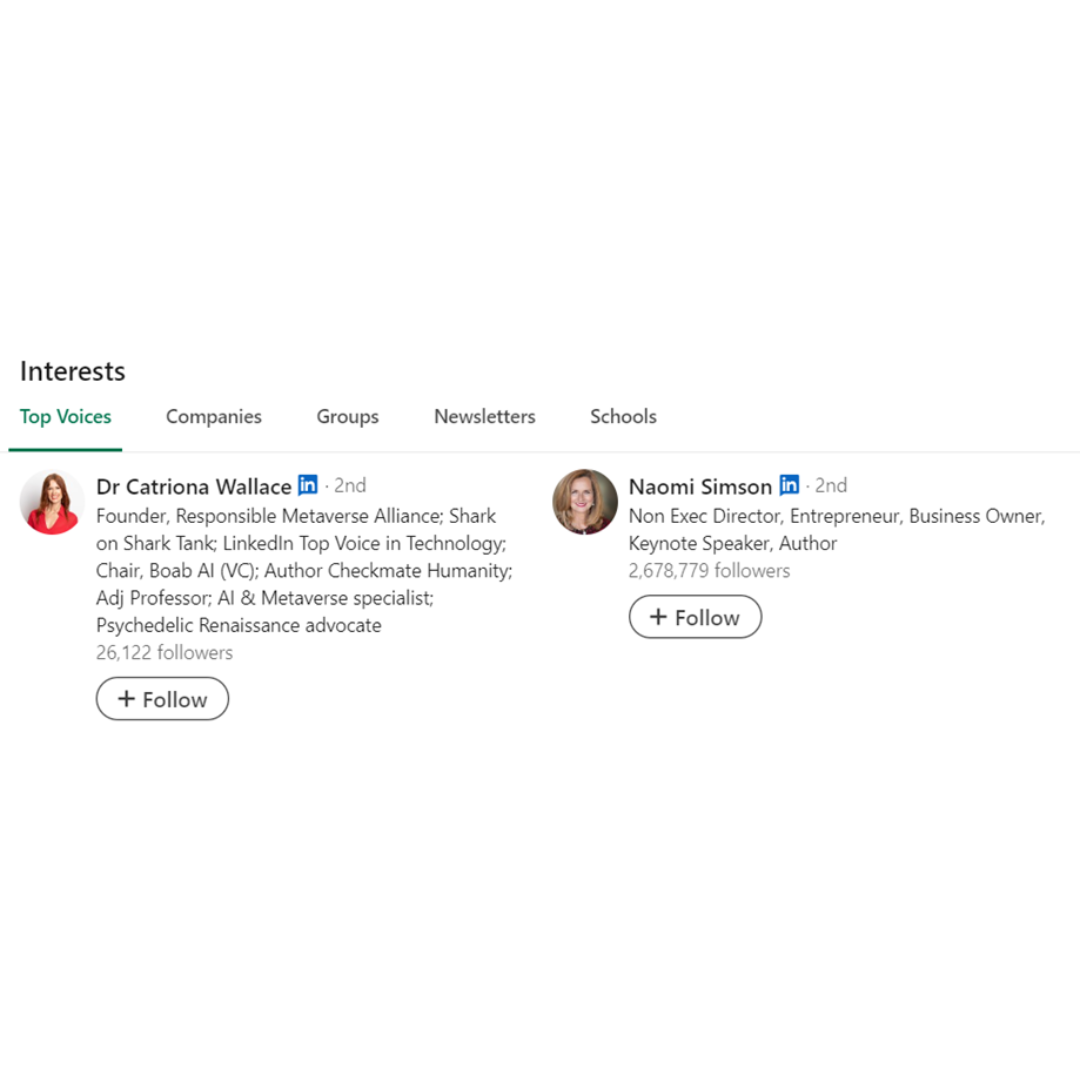
Contact Information
Ensure your contact information is up-to-date and easily accessible:
Accessibility is key for potential opportunities or collaborations. Make it effortless for others to reach out to you by providing current contact details and professional social media profiles.
Use a professional email address and avoid using personal or outdated email accounts:
Using a professional email address conveys professionalism and reliability, while outdated or personal email accounts may give the impression of unprofessionalism or lack of attention to detail.
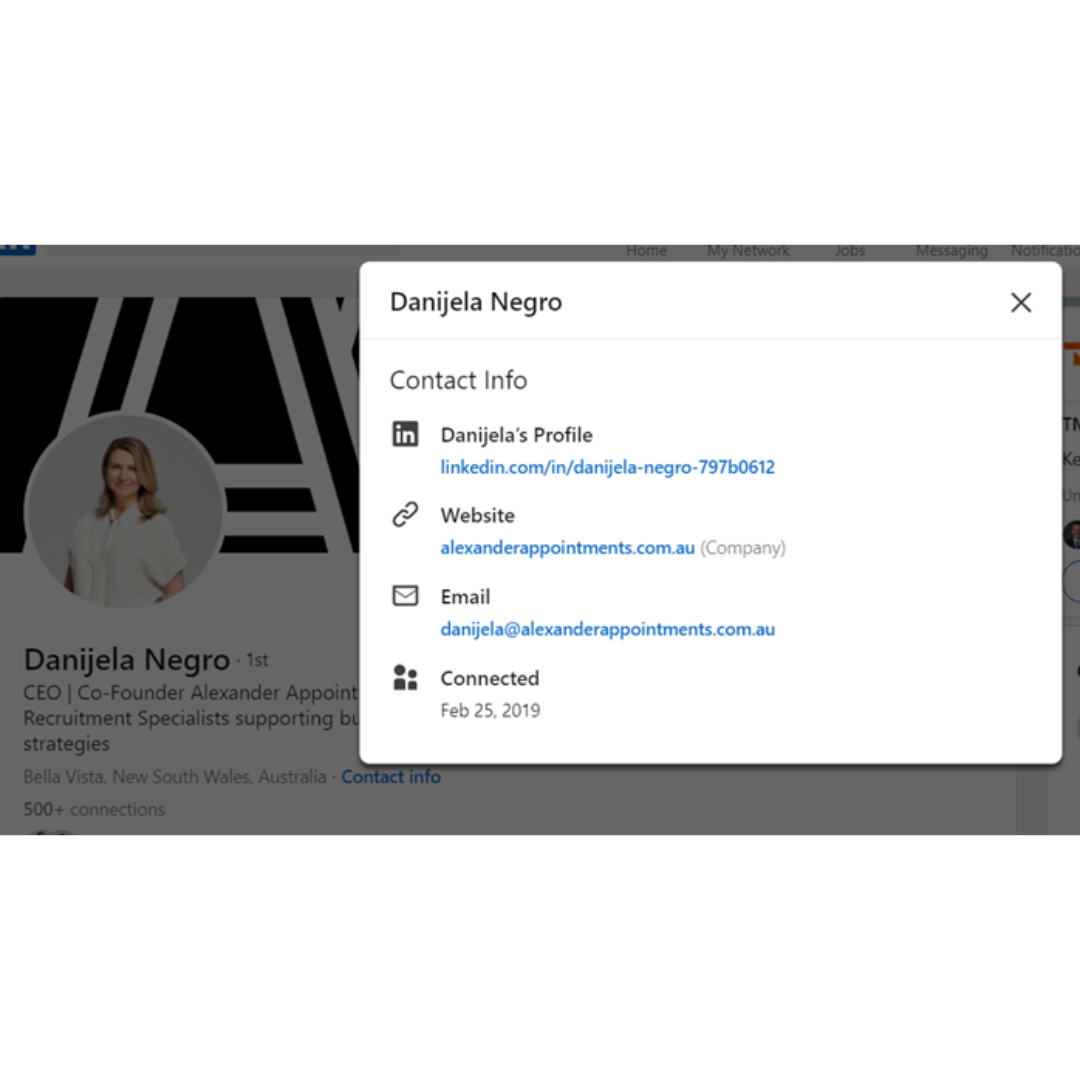
Customised URL
Personalise your LinkedIn URL to make it easier to share and remember:
Personalise your LinkedIn URL to make it easier to share and remember: A customised URL adds a professional touch to your profile and makes it more memorable. It simplifies sharing your profile and enhances your personal branding.
Edit your public profile settings to create a custom URL using your name or a variation of it:
it enhances your personal branding and makes your profile easier to find and share. A customised URL is more memorable and professional than the default string of numbers and letters generated by LinkedIn. It also improves your visibility in search engine results, increasing the likelihood of being discovered by recruiters, potential employers, or professional contacts.
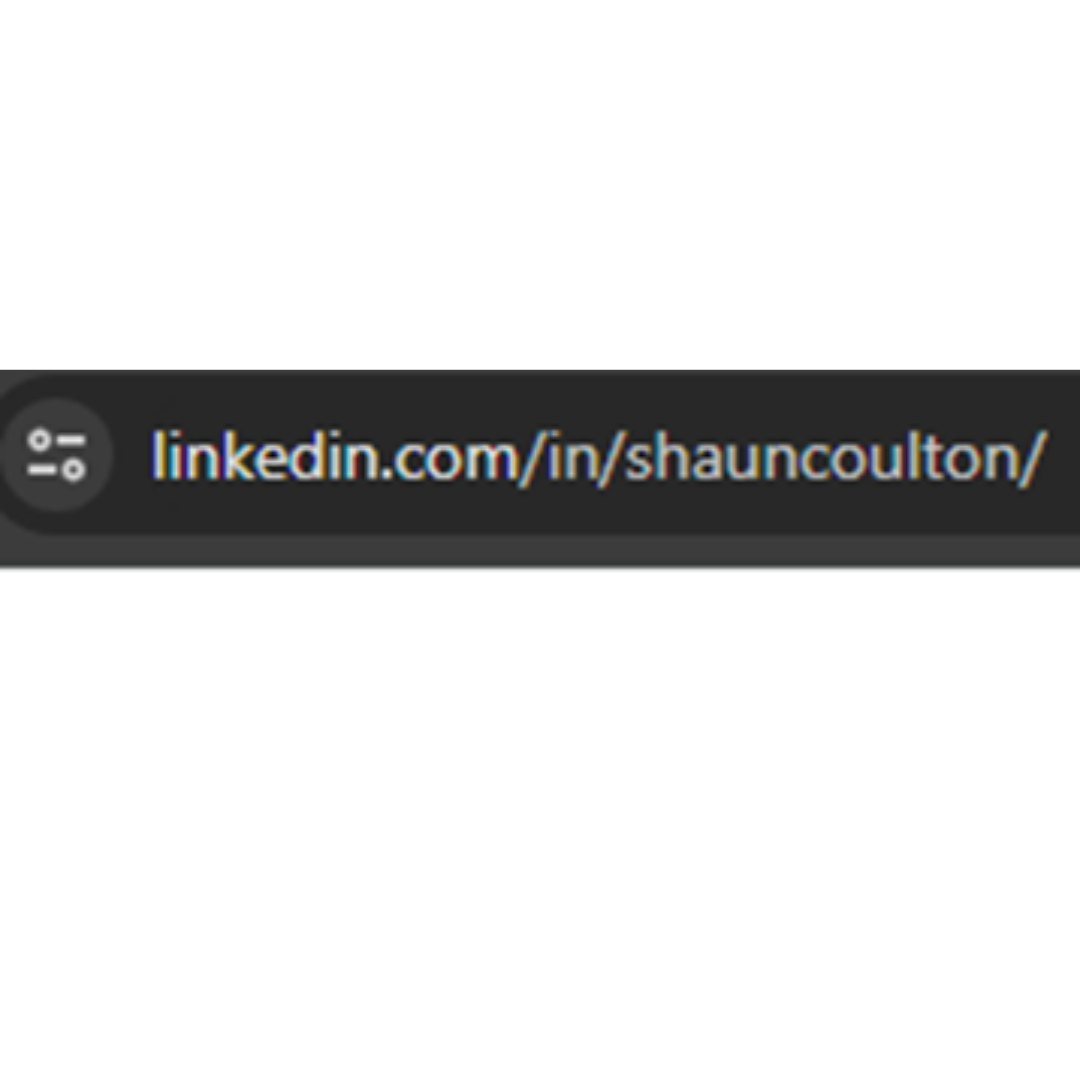
Privacy Settings
Review and adjust your privacy settings to control who can see your profile information and activity:
Protecting your privacy while maintaining visibility is crucial. Tailor your settings to strike a balance between networking and confidentiality, ensuring your profile is visible to the right audience. Decide whether you want your profile to be visible to search engines and adjust your settings accordingly.
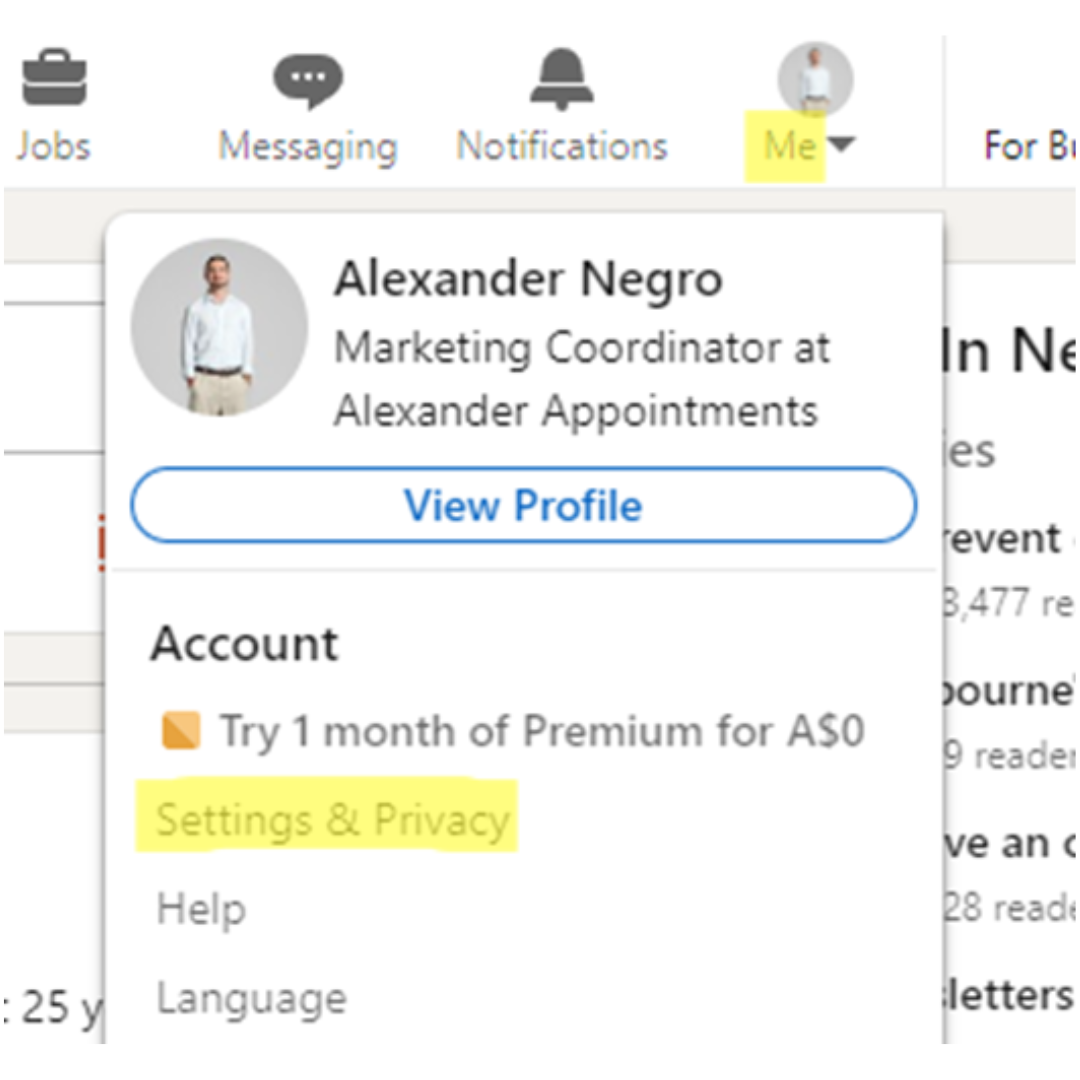
Regular Updates
Regularly update your LinkedIn profile with new experiences, skills, and achievements:
Keeping your profile current reflects your ongoing professional growth and accomplishments. Regular updates ensure that your profile accurately represents your skills and expertise.
Share relevant content, such as articles, blog posts, or industry news, to demonstrate your expertise and stay engaged with your network:
Sharing valuable content establishes you as a thought leader in your field and keeps you connected with your network. It's an effective way to showcase your knowledge and interests.
Network Building
Connect with professionals in your industry, including colleagues, peers, mentors, and recruiters:
Networking is essential for career growth and opportunities. Building meaningful connections with a diverse range of professionals can lead to valuable collaborations, mentorships, and job prospects.
Engage with your connections by congratulating them on work anniversaries, promotions, or other milestones:
celebrating the successes of your connections strengthens relationships and fosters goodwill. Taking the time to acknowledge milestones demonstrates your support and investment in their professional journey.
Personalise connection requests with a brief message explaining why you'd like to connect:
Adding a personal touch to your connection requests shows genuine interest and increases the likelihood of acceptance. Briefly mention common interests, mutual connections, or reasons for connecting to establish rapport.
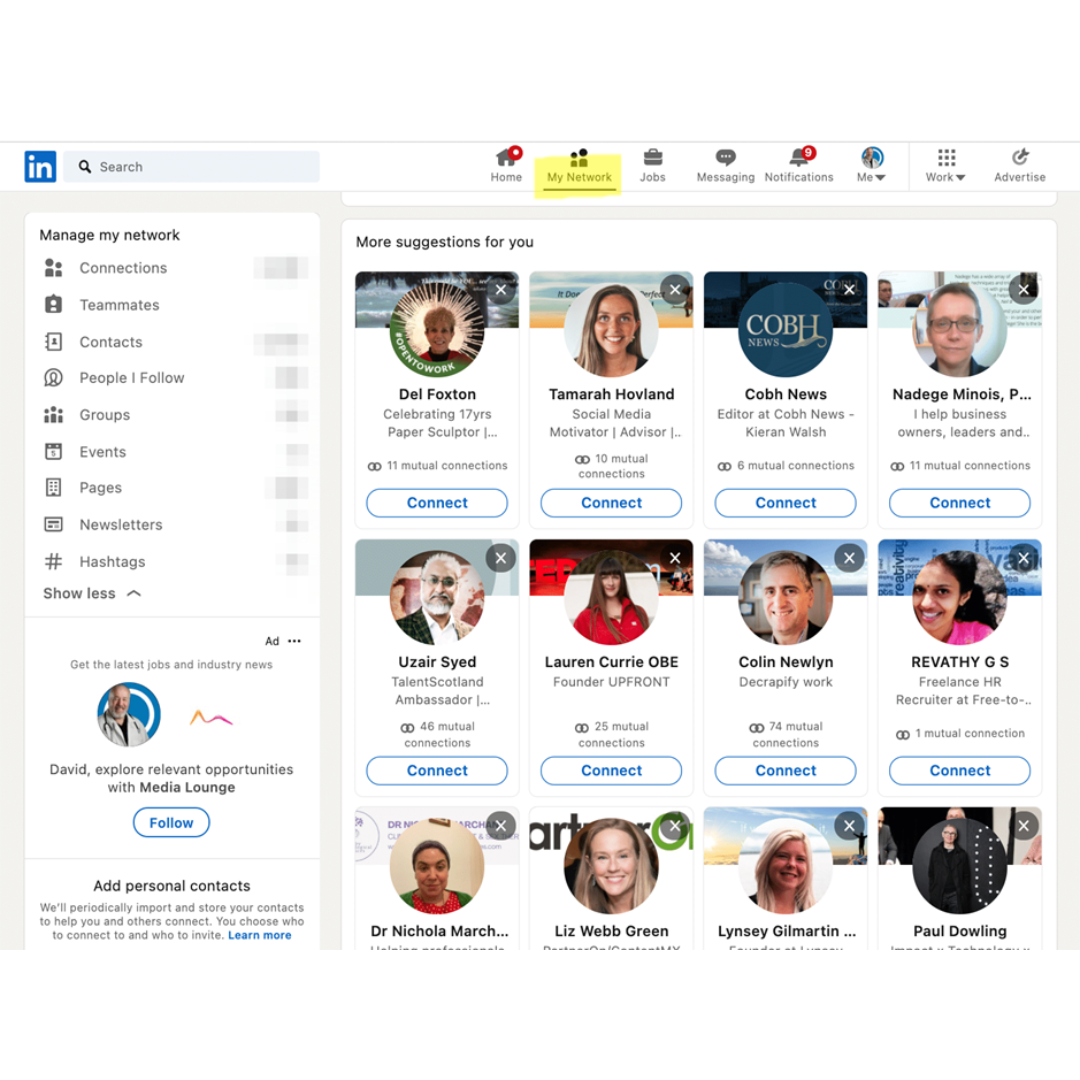
Professional Development
Take advantage of LinkedIn Learning courses to enhance your skills and stay competitive in the job market:
Continuous learning is vital for professional development and staying relevant in your industry. LinkedIn Learning offers a wide range of courses to acquire new skills or deepen existing ones, boosting your marketability.
Share updates about courses or certifications you've completed to demonstrate your commitment to professional development:
Broadcasting your learning achievements promotes your dedication to growth and improvement. It signals to employers and connections that you actively invest in enhancing your skills and knowledge.
By following these steps and optimising your LinkedIn profile, you can create a strong online presence that effectively showcases your skills, experiences, and achievements to potential employers in Australia. Regularly updating and engaging with your network will help you stay visible and increase your chances of success in your job search.
